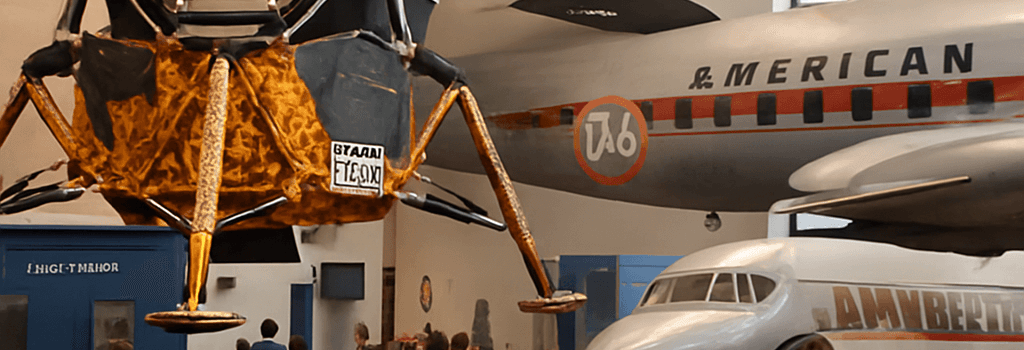Smithsonian Air and Space Museum Unveils Next-Gen Halls

$900 Million Renovation Nears Completion
The Smithsonian National Air and Space Museum’s multi-year, $900 million overhaul is entering its final phase. On July 28, 2025, visitors gained access to five more galleries—bringing the total open spaces to 13—and can now experience both the Boeing Milestones of Flight Hall and the brand-new Futures in Space gallery. This expansion reaffirms the museum’s nearly 50-year legacy of showcasing not only history’s triumphs but also today’s cutting-edge technology and tomorrow’s possibilities.
Revitalizing the Boeing Milestones of Flight Hall
Originally redesigned in 2014, the Milestones hall received a technology and infrastructure refresh rather than a full overhaul. Key upgrades include:
- 123-foot LED media band (8K resolution) running along the mezzanine, powered by a bespoke video-wall controller capable of 60 Hz refresh.
- Terrazzo flooring embedded with pulsar-map inlays updated for 2026—accurate to Earth’s galactic coordinates based on JPL’s latest ephemeris models.
- Interactive AR kiosks using Intel RealSense cameras and Unity-based software, providing layered storytelling around artifacts like John Glenn’s Friendship 7 capsule and the Apollo lunar module.
“The combination of high-resolution media, dynamic flooring graphics, and AR delivers a completely refreshed visitor experience without moving the iconic artifacts,” said Margaret Weitekamp, Curator and Division Chair.
Introducing the “Futures in Space” Gallery
“Futures in Space” recaptures the museum’s original 1976 ethos—displaying current hardware as contemporary artifacts. Highlights include:
- SpaceX Merlin 1D engine and grid fin—flight-proven on Falcon 9, delivering 190 tonnes of thrust at sea level and machined from aerospace-grade superalloys.
- Blue Origin New Shepard crew capsule mockup built from carbon-epoxy composites, slated for swap-out with the first retired flight article upon New Shepard’s completion of 20 missions next year.
- Sian Proctor’s Inspiration4 pressure suit, featuring a liquid-cooled ventilation garment and pleated mobility joints—donated directly by Axiom Space.
- Yuri Gagarin training suit from 1960, preserved under nitrogen-purged display cases with real-time RH and temperature monitoring.
Curator Matt Shindell explained, “We want visitors to ask: Who decides who goes to space? Why go? What will we do when we arrive? Future narratives should be participatory.”
New Interactive Technologies and Visitor Experience
To deepen engagement, the museum integrated:
- AR/VR Stations featuring Oculus Quest 3 headsets running custom Unity simulations of Artemis lunar missions.
- IoT-driven visitor flow analytics using Bluetooth beacons and anonymized data streams, optimizing gallery dwell times and reducing congestion.
- Live-streamed “TED-Talk” stage with 4K PTZ cameras, enabling remote participation by industry leaders, astronauts, and engineers.
Conservation and Preservation Techniques
The renovation also enhanced artifact preservation:
- UV-filter laminated glass cases blocking up to 99.9% of harmful radiation.
- Active microclimate control maintaining ±0.5 °C and ±3% RH stability via LiqTech humidification and precise HVAC zoning.
- Protective nanocoating on metal surfaces to inhibit corrosion by airborne acids.
Looking Ahead: Upcoming Exhibitions and Innovations
In 2026—marking the museum’s 50th anniversary and America’s Semiquincentennial—eight more galleries will open. Notable previews include:
- At Home in Space: A deep dive into life-support systems and habitats, featuring NASA’s next-gen Orion inflatable modules.
- NSF Discovering Our Universe: Showcasing SKA pathfinder radio-astronomy tech and JWST-driven discoveries.
- RTX Living in the Space Age: An immersive showcase of robotics, AI crew-assistants, and Vision Pro-based EVA training.
Expert Insights and Technical Analysis
- Dr. Elena Petrova, aerospace materials scientist: “The grid fin’s Grade 5 titanium architecture demonstrates how additive manufacturing is reshaping structural components.”
- Michael Stofan, former NASA chief technologist: “By displaying mission-critical hardware as current artifacts, the museum emphasizes the continuum between innovation and heritage.”
Admission remains free; timed-entry passes are required via the Smithsonian website. As the renovation wraps up, the National Air and Space Museum stands poised to inspire generations with both its storied past and its vision of humanity’s future among the stars.